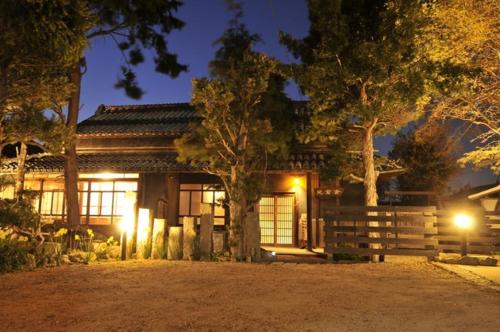Nakatsu Banshoen Garden & Marugame Museum
menuMenu
Explore a vast Japanese garden created in the Edo period, enjoying the harmonious blend of nature's beauty, including ponds, bridges, and pine trees. The adjacent Marugame Museum offers a collection of Western paintings and Oriental ceramics.




Highlights
- The beautiful scenery of the pond-style strolling garden
- Islands evoking the Eight Views of Omi
- The Oogasa Matsu, an umbrella pine tree over 600 years old
- Kansho-ro, believed to be the oldest existing sencha tea room
- The collection of Western paintings and Oriental ceramics at the Marugame Museum
Basic Information
- Address
- 25-1 Nakatsumachi, Marugame City, Kagawa Prefecture Search for tourist attractions in Kagawa
- Access
- About a 25-minute walk from Marugame Station on the JR Yosan Line Show route
- Op.Hours
- Monday: 9:30 AM - 5:00 PM, Tuesday: 9:30 AM - 5:00 PM, Wednesday: Closed, Thursday: 9:30 AM - 5:00 PM, Friday: 9:30 AM - 5:00 PM, Saturday: 9:30 AM - 5:00 PM, Sunday: 9:30 AM - 5:00 PM
- Cld.Days
- Wednesday
- Fee
- Adults: ¥500, High school students: ¥300, Junior high school students and younger: ¥200
- INFO
- Free parking available
Overview
Recommended nearby attractions
Kinsuien Garden

A stunning Japanese garden representing the beauty of Okayama Prefecture. Designed in the pond-style strolling garden style, it offers a breathtaking display of seasonal flowers and trees.
New Reoma World

Experience the thrill of a wide array of attractions, including a giant Ferris wheel and roller coasters, at one of the largest amusement parks in the Chugoku and Shikoku regions!
Honrakuji Temple

The beauty of the kare-sansui garden, selected as one of the Shikoku Eighty-Eight Views, borrowing the Yoshino River as its backdrop, is truly exceptional.
Takamatsu Castle Ruins Tamamo Park

One of Japan's three great water castles, overlooking the Seto Inland Sea. While the main keep no longer exists, the stone walls and moats retain their historical character. Famous as a cherry blossom viewing spot.
Kotohiki Park

Kotohiki Park boasts breathtaking views of the majestic Seto Inland Sea and a massive sand drawing of a "Kan'ei Tsuhō" coin.
Okayama Korakuen Garden

One of the Three Great Gardens of Japan. This stroll garden was created approximately 300 years ago, offering stunning seasonal views.
Toriryu Park

A peaceful park offering breathtaking views of the Seto Inland Sea and Sanuki Fuji. In spring, it's a popular destination for cherry blossom viewing with 1500 Someiyoshino cherry trees in full bloom.
Ritsurin Garden

Ritsurin Garden is a vast Japanese garden created during the Edo period. Its beauty lies in the stunning seasonal landscapes, picturesque ponds, artificial hills, and pine trees. Its beauty has earned it a prestigious three-star rating from Michelin.
Seto Ohashi Memorial Park

A vast, green park offering stunning, up-close views of the Seto Ohashi Bridge. Learn about the bridge's history and structure through models and videos at the Seto Ohashi Memorial Museum.
Yumeji Kyodo Museum of Art (Main Building)

A museum boasting a top-tier collection of Yumeji's works in Japan, where you can appreciate his masterpieces and precious materials.
Nearby Hotels
Kanakuraen / Vacation STAY 5125

Toyoko Inn Marugame Ekimae

APA Hotel Marugame-Ekimae-Odori

Marugame Plaza Hotel

Toyoko Inn Marugame Ekimae

Hotel Route Inn Marugame

Comfort Inn Zentsuji Inter

Okura Hotel Marugame

Comfort Inn Zentsuji Inter

Guesthouse Mi Casa Su Casa

